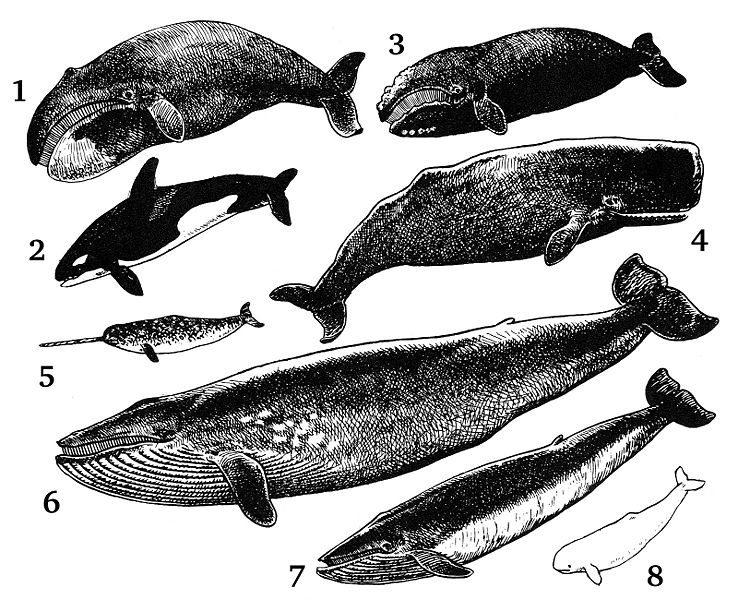
Modern whales
For obvious reasons it’s tough to find good photos or drawings of long gone ancient whales and dolphins, so instead I am using a drawing of several of today’s modern whales for this post. Scientists have concluded that whales, dolphins and porpoises have evolved from Archaeocetes, the name given to a group of ancient whales. (For more on Archaeocetes check out this post.)
But there is much more to cetacean evolution than meets the eye. For starters, scientists have identified three major radiations. What does radiation have to do with whale evolution you ask? Well, in this context radiation actually refers to “times of functional, ecological, and taxonomical diversification,” as defined by the Encyclopedia of Marine Mammals. Basically periods of evolutionary history when major things happened and major evolutionary changes took place.
For whales and dolphins the first big radiation or evolutionary craziness was 34 to 53 million years ago when ancient whales and dolphins “shifted from riverine and near-shore marine settings to fully oceanic habits, accompanied by changes in locomotory and hearing mechanisms.” So this was a period of great change as 40 species of ancient whales started practicing an ocean lifestyle full-time becoming less reliant on being close to land.
Spending a lot more time in the water caused the next big radiation when echolocating toothed whales and filter feeding baleen whales appeared on the scene. This happened pretty fast in about 5 million years. Yes, in terms of evolution 5 million years is fast if you can believe it. Many changes were taking place on earth including the opening of the Southern Ocean, temperature changes and increased ocean productivity and by 23.5 to 29 million years ago there were 50 species of whales and dolphins.
Lastly, 10 to 12 million years ago species close to modern whales and dolphins started to appear and paved the way for our whales today. Now we are fortunate enough to have 78 species of whales, dolphins and porpoises. A few of these species are in grave danger though, such as the vaquita. Because millions of years of evolution is no match for 100 years of careless and destructive fishing practices.
Leave a Reply